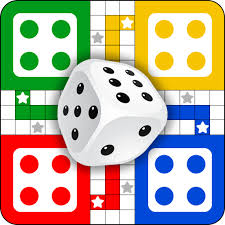Ludo Game, its origins back to ancient India, where it evolved from the game Pachisi, often referred to as the “Royal Game of India.” Pachisi dates back to the 6th century and was played by Indian royalty on elaborate boards. The modern version of Ludo was patented in England in 1896, simplifying the rules and making it accessible to a broader audience. Since then, it has gained immense popularity globally, with various adaptations and versions emerging over the years.
How to Play Ludo
1. Game Setup
Ludo can be played by 2 to 4 players, each selecting a color: red, blue, green, or yellow. The game board features a cross-and-circle layout with each player’s home column and a center square where all players aim to reach.
2. Rules of the Game
- Starting the Game: Players roll a single die to determine the order of play. A roll of six allows a player to enter their piece onto the board.
- Moving Pieces: Players take turns rolling the die and moving their pieces according to the number rolled. If a player rolls a six, they get an additional turn.
- Capturing Opponents: If a player lands on a space occupied by an opponent’s piece, the opponent’s piece is sent back to their starting area. This adds a layer of strategy as players must decide when to move cautiously and when to be aggressive.
- Reaching Home: The objective is to move all four pieces from the starting area to the center square (home). The first player to do so wins the game.
3. Winning the Game
The game combines elements of luck (rolling the dice) and strategy (deciding which pieces to move and when). Players must think critically about their moves while also anticipating their opponents’ strategies.
Cultural Significance
Ludo has become a beloved pastime across different cultures. In many countries, it serves as a way for families to bond and spend quality time together. It has also been used as an educational tool, teaching children about counting, strategy, and the importance of taking turns.
In India, Ludo has seen a resurgence in popularity, particularly during the COVID-19 pandemic, as families sought activities to enjoy together at home. It has sparked social interactions through online versions, allowing friends and family to connect remotely.
Digital Transformation
In recent years, Ludo has made a significant transition into the digital realm, with numerous mobile applications and online platforms allowing players to enjoy the game virtually. These digital versions often include multiplayer options, making it easy for friends and family to play together, regardless of distance. The convenience of playing Ludo on smartphones and tablets has contributed to its revival among younger generations.
Conclusion
Ludo is more than just a board game; it represents a rich history of culture, strategy, and connection. Its simple rules and engaging gameplay make it accessible to players of all ages, fostering relationships and providing hours of entertainment. As Ludo continues to evolve in the digital age, it remains a cherished game that bridges generations, proving that the joy of play is truly timeless. Whether gathered around a physical board or playing online, Ludo will always hold a special place in the hearts of its players.




